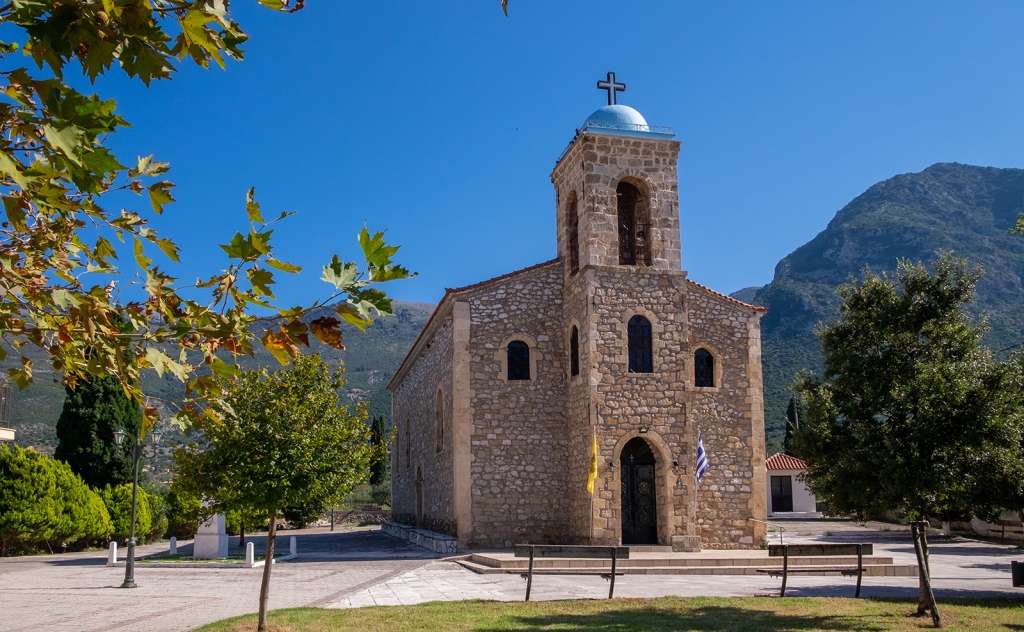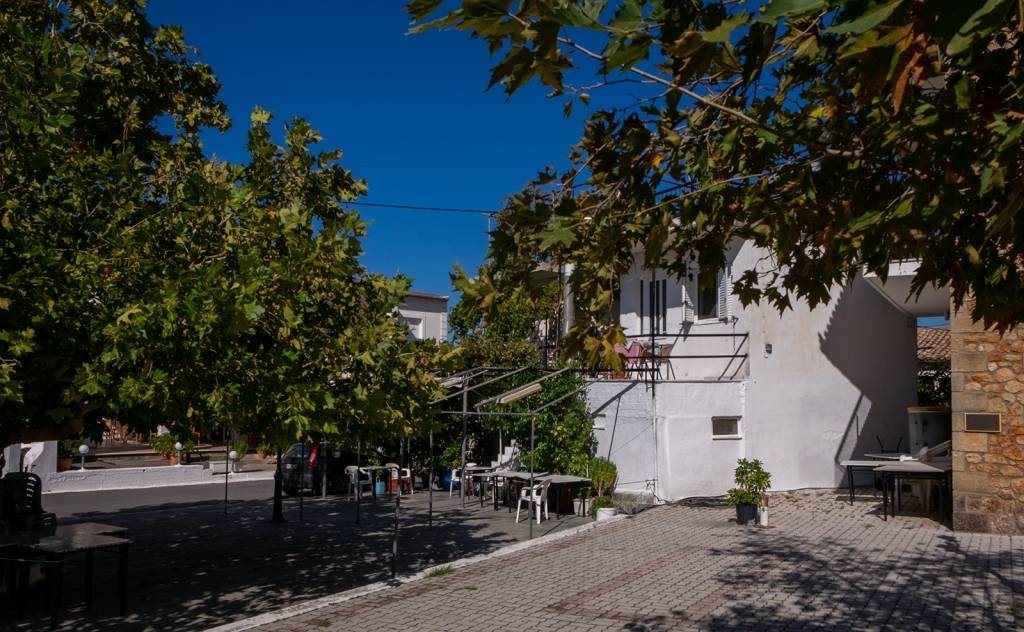






Armenioi is only 4 kilometres from Kyparissia and 71 kilometres from Kalamata. It is built at an altitude of 107 metres and has approximately 300 permanent residents. Mount Geranio, which is one of the Mountains of Kyparissia, also known as Mount Aigaleo, dominates the area to the east of the village.
There are various versions concerning the name of the village. Some argue that it owes its name to Ormenos or Armenos, grandson of the wind god Aeolos, who settled in the area. Some others say that the name is due to an Armenian (a resident of Armenia) who lived in the area as a significant landowner. At the same time, there is also a version that says that during the Byzantine era, general Nikephoros Phokas brought Armenians in 961 to strengthen the native population. Thus, the villages of Armenis and Armenochori were founded in the Cretan prefectures of Chania, Rethymno and Lasithi, as well as in the area of Messenia.
During antiquity, the area was part of Nestor’s kingdom, the famous king of ancient Pylos, while an ancient temple in the area was witnessed during the classical period. Initially, the village was located further west of the current location, in the "Prinzipa" location. A column of an ancient temple dating back to the 4th-3rd century BC was discovered by accident. After the predominance of Christianity, the temple was converted into a Christian one. Also, until the end of the 19th century, in the area, there was the church of Agios Konstantinos, which, according to oral tradition, was the work of Constantine the Great during one of his campaigns in the Peloponnese. Very close to the church, the "Principa" spring with its water gushing from the rocks can still be found.
In 1204, the Byzantine Empire briefly passed into the hands of the Franks and the region of Moria was inhabited by them and by the orders of Capuchin monks, from whom the area took the name "Capucci". Generally, Armenioi has suffered many conquerors, such as the Slavs, the Venetians and the Turks in the older years and the Germans and the Italians in the newer ones.
In 1830, Simeon Gavras, a monk of the martyred Monastery of Arkadios, rescued in 1866, was born to refugee parents (originally from Crete) in the village.
In the village, visitors can see the traditional houses with domes, while the central square is dominated by the Church of All Saints, which was built in 1877, and its bell tower abuts the entrance. Of unique beauty are the iconostasis images (hagiographies depicting the saint), which date back to 1920. Next to the church is the Hero of the Fallen from the battles between 1912 and 1949. In the square, apart from the taverns and cafes of the village, visitors can also find the Community Hostel of Armenioi.
On the village’s south side, one can see the churches of Panaitsa of Loutros and Panaitsa of Capoutsi, which took their name from the order of the Capuchin monks that settled in the area during the period of the Venetian occupation. The small church celebrates on the 15th of August when the faithful are offered a doughnut (loukoumi) as a remnant of the Catholic tradition.
On the way to Perdikoneri (8 kilometres from Kyparissia), visitors can see the ruins of an old water mill, also known as the "Mill of Old Miller Georgios Stathopoulos". The water mill operated until 1955 and used water from the village spring, known as "Manna". The location around the spring also got the same name.
At this point, it is worth referring to the so-called "Clock" of Geranios. In earlier years, the villagers calculated the time in the following way: when the sun's rays fell in the middle of the height of Mount Geranios, on the bare rocks, then they calculated that the time was about 12 to 1 in the afternoon.
Every year, on the first fortnight of August, the "Feast of Okra" is organised at the village square, where free okra baked in the oven is offered. After all, Armenioi is one of the biggest suppliers of okra to the Greek market. The "Horticultural Association" (founded in 1966), which manages okra production, is also active in the village. Finally, during the celebration of All Saints (the first Sunday after Pentecost), a celebration with live music and dancing takes place at the village square.